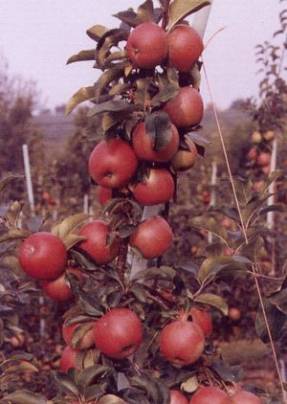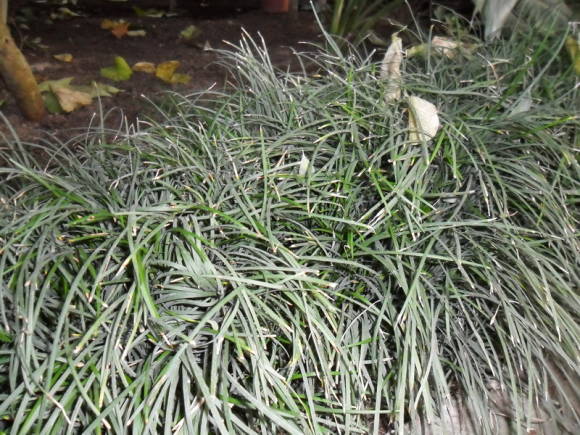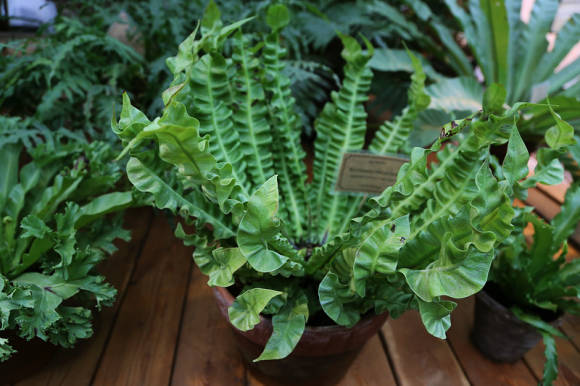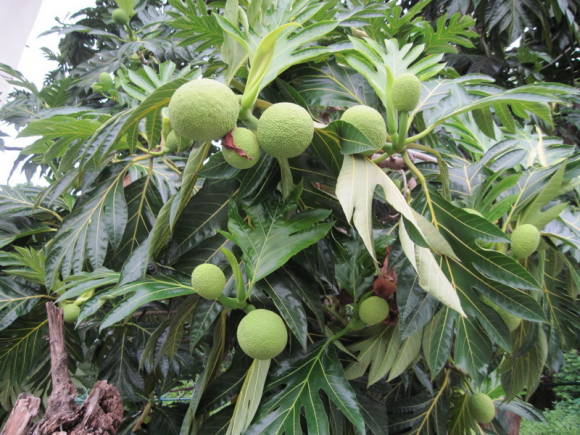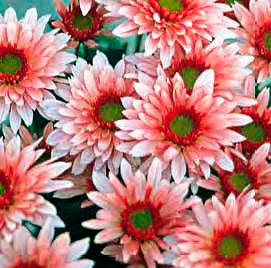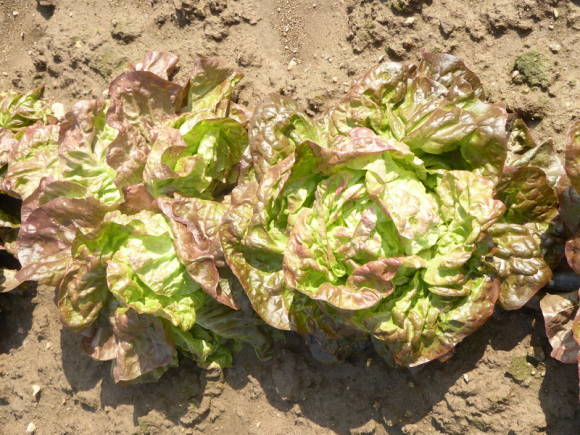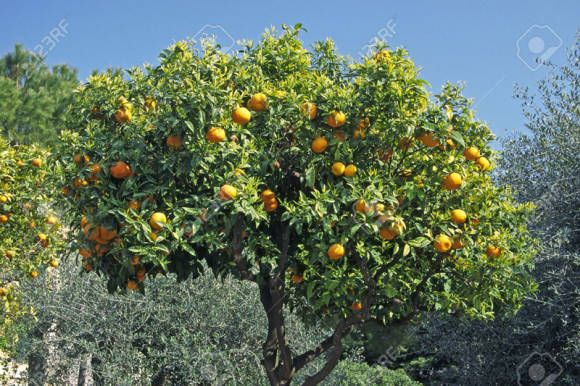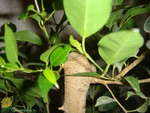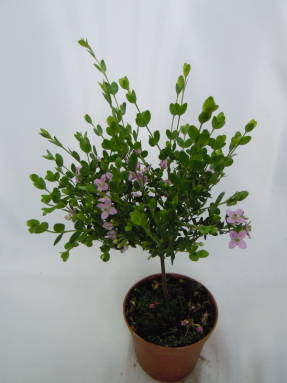On the Black Sea coast of Russia, Bowden's nerina (a plant is often called nerina) (Nerine bowdenii) Is the latest flowering species of the Amaryllidaceae family. This is an amazing plant, the unusual appearance of which is simply breathtaking on dull autumn days. Delicate, bright pink, gracefully bending, funnel-shaped flowers with slightly curling perianth lobes are collected in inflorescences (15-17 pcs.) On a strong elastic peduncle. Some note the extraordinary resemblance of a flower to a lily, others to a spider (because of the fancifully curved petals). Hence the names - Guernsey Lily, Japanese Spider Lily, Cape Flower and nymph flower.
The flower got its interesting name in honor of the ancient Greek sea god Nereus or one of his daughters, who were called Nereids. Legend has it that Elder Nereus had fifty of them, they lived in the depths of the sea, danced in round dances in the waves. On moonlit nights, they went ashore and, joining the naiads, nymphs and tritons, sang, danced and arranged various competitions. The Nereids were friendly to the people, they often rescued sailors and fishermen in distress [3].
The native land of the endemic genus nerine is South Africa, where its species are common in those areas where the greatest amount of summer precipitation falls. Most of the species bloom in summer, and only four in winter. The most famous representatives of the genus are nerina of guernsey (Nerine sarniensis) and Nerin Bowden (N. bowdenii), which are widely used in breeding, especially in the Netherlands [4, 5].
Nerina Bowdena is the most cold-resistant species of the genus [3]. Its bulbs were first brought to Europe by the Cornish Bowden in 1903, after which the species was named.
 |
This is a plant with narrow light green (without petioles) linear belt-like leaves (in large specimens there are 8-9 of them), pointed at the ends, the sheaths of which form a short false stem. The leaves appear long before flowering, during which their length is 10–20 cm. The height of the peduncles is 30–50 cm, under favorable conditions 60 cm. The bulbs are rounded, with a high neck and consist of leafy closed scales. An adult bulb can reach 7–8 cm in height and 5–6 cm in diameter (circumference up to 16 cm). Blooms in November-December, one inflorescence - within 15-20 days. Usually two peduncles develop on a large plant. The cut retains its decorative effect for up to 4 weeks. To make it stand longer, you need to pour a little water into the vase and regularly update the cut.
Most often, Bowden's nerina is grown as a pot culture, but in the Sochi region it does well in the open field. It is preferable to plant plants in sunny, sufficiently humid places. According to our observations, in a wet area, nerina retains foliage all year round, although long-term waterlogging can lead to rotting of the bulbs [1].
If you grow nerin in a pot culture, then after flowering the plant should be kept in bright light in a cool (7-10 ° C) room with moderate moisture. Watering is reduced by spring, when the leaves begin to turn yellow, and after they dry out, they stop altogether. Store the bulbs in pots in a cool, dry, dark place.
 |  |
Nerina has a rest period from May to August. During this time, the bulbs should not be watered for about 60 days, and if necessary, they can be dug up and stored in a cool room. However, in this case, they must necessarily have roots [1]. It was found that the presence of roots in the bulbs during storage and planting has a positive effect not only on the intensity and timing of flowering, but also on the establishment of future flower stalks, which occurs during the growing season of the previous year.
Nerin is propagated by daughter bulbs that form on the main large bulb. The baby is separated and raised. A new plant will bloom when the circumference of the bulb reaches 12 cm, which occurs around the 3rd year.
The optimal time for planting in open ground in Sochi is July - early August. In this case, flowering begins in October and lasts 2 months, the height of the peduncle reaches 50-60 cm.Later dates lead to a decrease in the number of flowering plants and a deterioration in their quality.
 |  |
| Nerine in pot culture | The development of roots in bulbs through 3 months after planting |
When grown in a pot culture, the bulbs are planted in June-July in a light substrate, not deeply deepening: the top is left above the soil surface. The containers are transferred to a cool room. In the same period, the bulbs stored in pots begin to be watered.
One of the problems when growing Bowden Nerine in a pot culture is the growth of root mass and daughter bulbs, as a result of which the plants begin to bloom irregularly. Therefore, annually, during the dormant period or after it, large bulbs must be transplanted, having previously separated the baby from them.
Literature
1. Lobova T.E. On the issue of cultivating Nerina Bowden and Amaryllis belladonna on the Black Sea coast of Russia / T.E. Lobova, N.A. Slepchenko // Scientific works of the State National University
VNIITSISK Russian Agricultural Academy, Vol. 43 "Ornamental Horticulture in Russia" - Sochi:
VNIITSISK, 2010. - T. II. - S. 59–63.
2. Jeter O. Nerina - "flower of a nymph", "lily-spider". - [Electronic resource]. - Access mode: //www.gardenia.ru/pages/nerine001.htm.
3. Fevralskaya I. The riddle of nerine // My flower. - 2012 .-- No 9 (18). - [Electronic resource]. - Access mode: www.moicvetok.ru/anons/01-10-2012-zagadka-nerine.
4. Saunders R. Nerines In South Africa: A Primer / R. Saunders, R. Saunders. - [Electronicdata]. - Access mode: www.bulbsociety.org/GALLERY_OF_THE_WORLDS_BULBS/GRAPHICS/Nerine/Nerineprimer.html.
5. Shields J.E. The Amaryllis Family: Genus Nerine. - [Electronic data]. - Access mode: //www.shieldsgardens.com/amaryllids/nerine.html.
The magazine "Floriculture" № 5 - 2014
